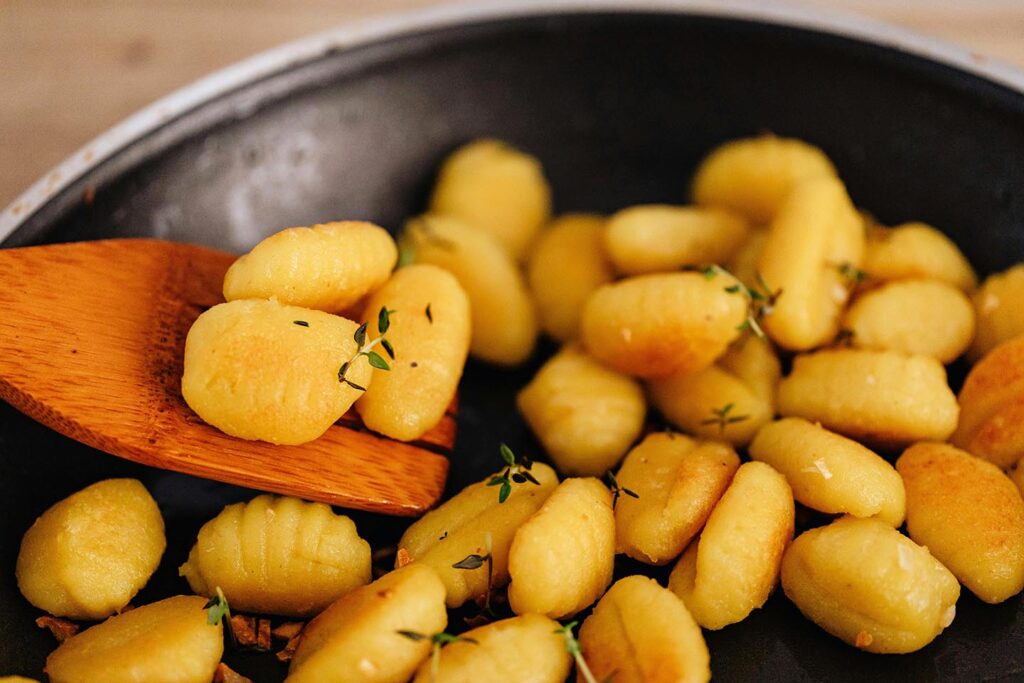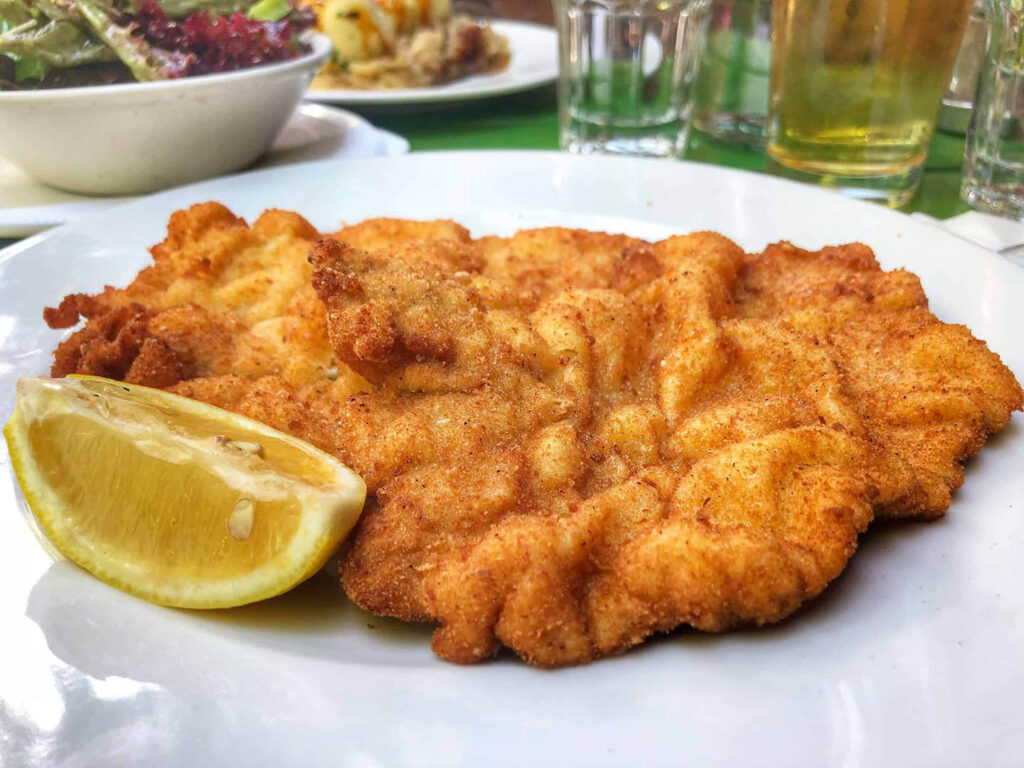
Caviar is an extravagant delicacy consisting of salt-cured sturgeon fish eggs. Sturgeon caviar is considered the most prized and luxurious type, but there are a few varieties of caviar from other fish such as salmon, trout, and paddlefish. The eggs are harvested from the fish, then processed and salted to preserve them. Caviar is known for its distinct flavor, which can vary depending on the type of fish and the processing methods used. It’s often served as a garnish or spread on crackers, toast points, or blinis, and is frequently associated with luxury and fine dining.
What is the difference between caviar and fish roe?
Caviar and fish roe are both derived from fish eggs. Still, several key differences between the two add to their unique culinary experiences, including the species of fish they come from, size, flavor, price, and cultural significance.
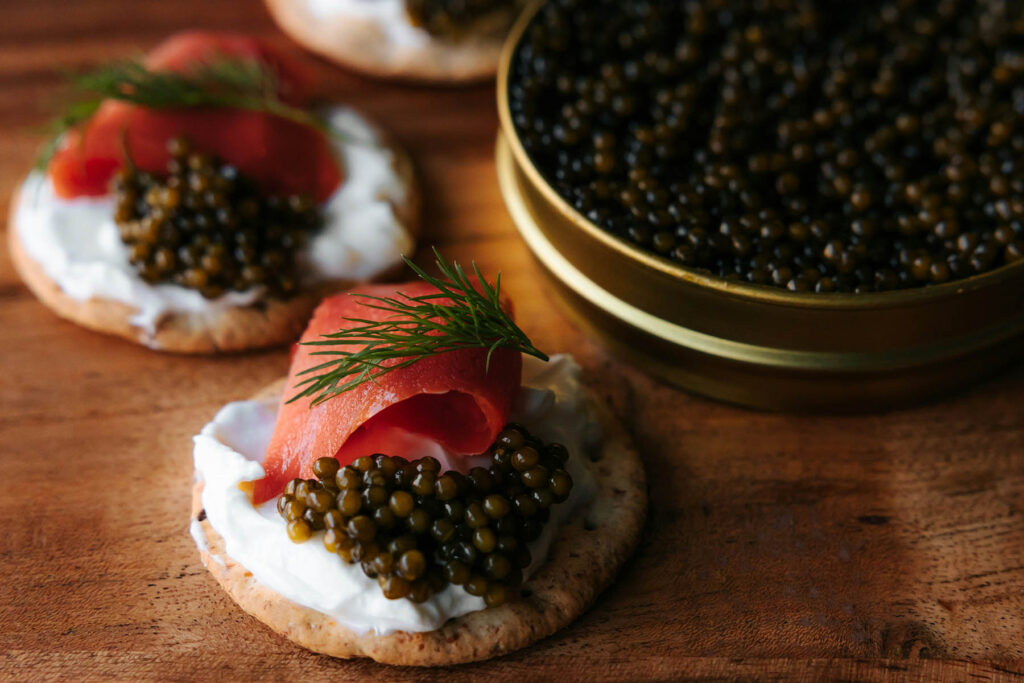
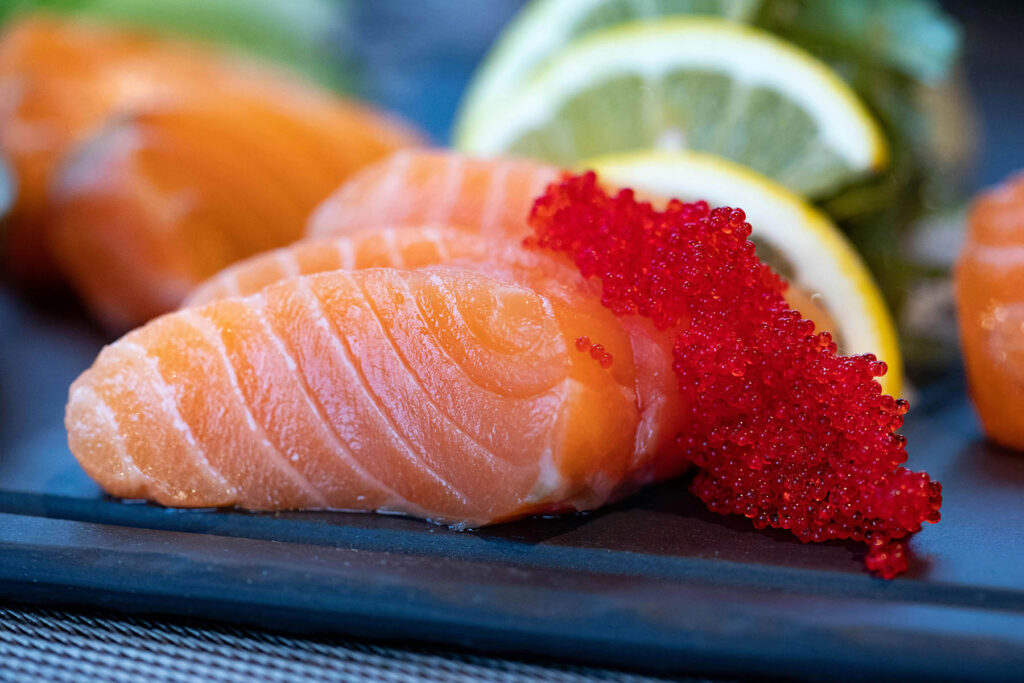
- Species of Fish: Caviar refers explicitly to the salt-cured eggs of sturgeon fish, particularly those belonging to the Acipenseridae family. These include sturgeon species such as Beluga, Osetra, Sevruga, and others. On the other hand, fish roe encompasses the eggs of various fish species, including salmon, trout, paddlefish, lumpfish, and more.
- Size and Texture: Caviar eggs tend to be larger and more delicate than fish roe. The eggs of sturgeon caviar, in particular, are prized for their large size, smooth texture, and distinct pop when eaten. Fish roe can vary in size and texture depending on the fish species, ranging from small and firm to larger and more tender eggs.
- Flavor Profile: Caviar is renowned for its complex and nuanced flavor profile, which can vary depending on the type of sturgeon and the processing methods used. It often has a delicate, buttery taste with subtle briny and nutty undertones. On the other hand, fish roe may have a more pronounced fishy flavor, which can vary depending on the fish species and how it’s processed.
- Price and Rarity: Caviar, particularly from certain sturgeon species like Beluga, Osetra, and Sevruga, is considered a luxury delicacy and commands premium prices due to its rarity, labor-intensive harvesting process, and high demand. While still valued in culinary circles, fish roe is generally more affordable and widely available, especially from fish species that are more commonly farmed or harvested.
- Cultural and Culinary Significance: Caviar has a long history of being associated with luxury, fine dining, and special occasions in many cultures worldwide. It’s often served as a delicacy at upscale restaurants, gourmet events, and celebratory gatherings. While also used in various culinary dishes and cuisines, fish roe may not have the same prestige or cultural significance as caviar in certain contexts.
Why is caviar so expensive?
Caviar is one of the most expensive gourmet foods in the world for several reasons, including its rarity, labor-intensive production, various environmental factors, and its luxury image.
- Rarity: True caviar comes from sturgeon, native to select regions such as the Caspian Sea, the Black Sea, and certain rivers. These fish are relatively rare and slow to mature, making their eggs scarce and valuable.
- Long Maturation Process: Sturgeon fish take many years to reach maturity and produce eggs suitable for caviar. This lengthy maturation process means caviar production is slow and cannot be scaled up quickly.
- Quality and Flavor: High-quality caviar is prized for its delicate flavor, smooth texture, and nuanced taste profile. The finest caviars, such as Beluga and Osetra, command premium prices due to their superior quality and rarity.
- Labor-Intensive Harvesting: Harvesting caviar is challenging, tt requires skilled professionals to delicately extract the eggs from the fish without damaging them, followed by careful sorting and processing to ensure quality.
- Environmental Factors: Overfishing, habitat destruction, and pollution have led to a decline in wild sturgeon populations, further reducing the availability of caviar. Sustainable caviar farming practices have been developed to mitigate these issues, but still require significant investment and resources.
- Exclusivity and Luxury Image: Caviar has long been associated with luxury and high society, contributing to its premium price tag. Its exclusivity and perceived prestige make it a desirable indulgence for special occasions and fine dining experiences.
What are the most popular varieties of caviar?
Several varieties of caviar exist, each with its own unique characteristics and flavors, and typically named after the fish it is harvested from. Some of the most well-known or popular varieties include:
- Beluga Caviar: This fish is primarily found in the Caspian Sea, and the caviar is well known for its large, luscious pearls and delicate flavor. It is considered one of the most luxurious and expensive types of caviar available today.
- Osetra Caviar: This caviar is prized for its medium-sized eggs and complex, nutty flavor. The color can range from golden to dark brown, and it’s considered one of the finest caviars available.
- Sevruga Caviar: This caviar is known for its small, firm eggs and bold flavor. It’s typically darker in color than other caviar types and has a slightly briny taste.
- Kaluga Caviar: Also known as River Beluga caviar, Kaluga caviar comes from a hybrid of the Kaluga and Amur sturgeon. It features large, glossy eggs with a rich, buttery flavor similar to Beluga caviar.
- Siberian Caviar: This caviar is characterized by its small to medium-sized eggs and subtle, smooth flavor. It’s often more affordable than other types of caviar but still highly regarded for its quality.
- American Caviar: American caviar encompasses various types of caviar produced from fish native to North America, such as paddlefish, hackleback sturgeon, white sturgeon, and salmon. Each type has its own flavor profile and characteristics, offering a range of options for caviar enthusiasts.
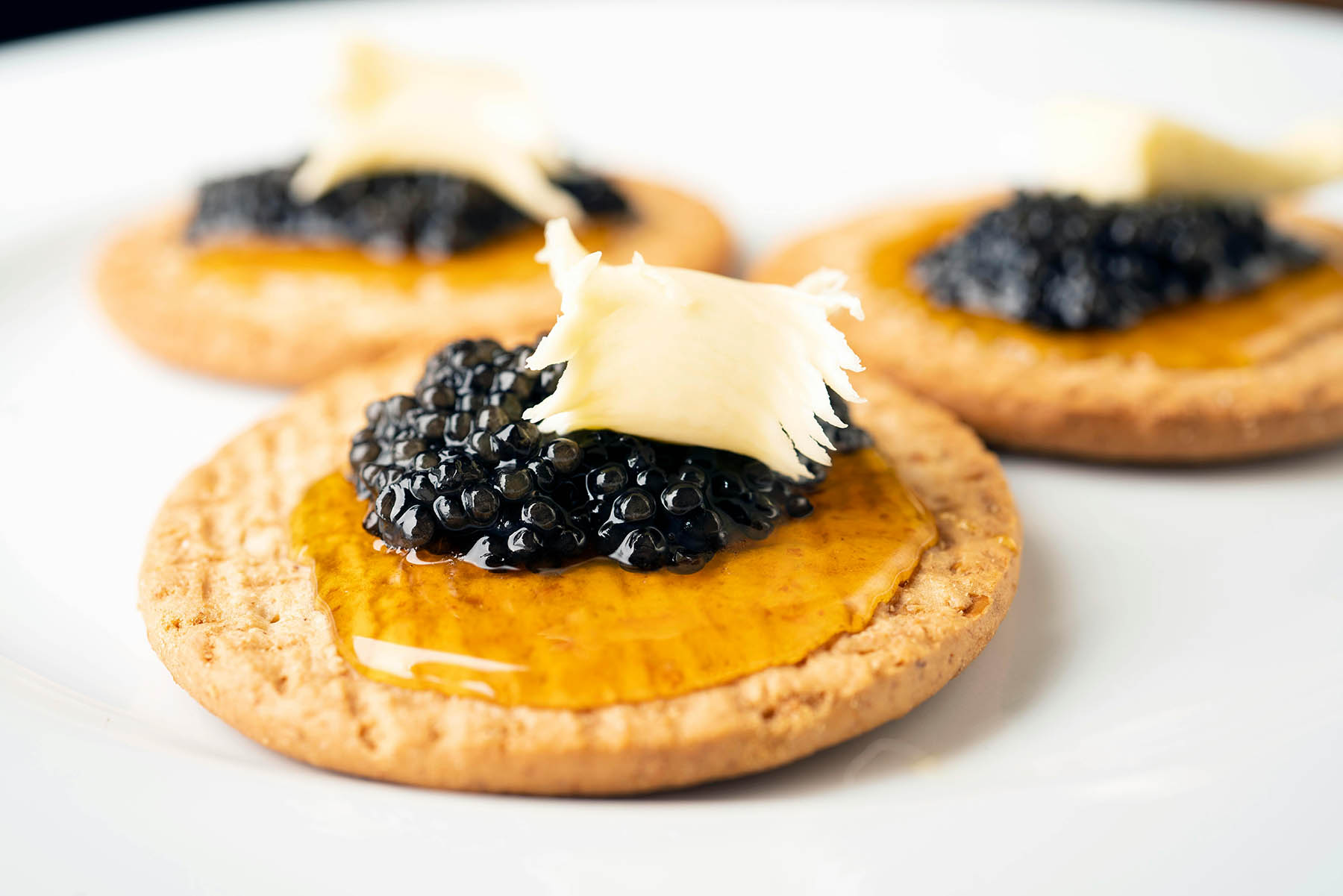
What does caviar taste like?
What caviar tastes like truly depends on the type of fish it comes from and how it was processed. However, caviar is generally described as having a complex and nuanced yet subtle flavor profile and delicate texture. Common descriptors you will hear for the taste of caviar typically include:
- Salty: Caviar is typically salt-cured during the preservation or curing process, so it typically has a pronounced salty taste.
- Briny: Depending on the type of fish and the waters in which it was harvested, caviar can have a subtle briny or seawater-like taste. This brininess adds a refreshing and oceanic element to the flavor profile.
- Buttery: Many high-quality caviars, such as Beluga and Kaluga, have a rich and buttery flavor. This characteristic is often associated with the caviar’s smooth texture and delicate taste.
- Nutty: Some types of caviar, such as Osetra, are known for their nutty undertones that add depth and complexity to the caviar, enhancing its overall taste experience.
- Umami: Caviar is also prized for its savory and umami-rich flavor, which comes from the fish eggs themselves. This savory quality contributes to the luxurious and indulgent taste of caviar.
How do you eat caviar?
Caviar is typically enjoyed in small amounts to savor its delicate flavor. Some people prefer to enjoy caviar straight from the tin to appreciate its taste and texture fully. The best way to be sure your experience is as luxurious as it can be is as follows:
- Keep it Chilled: Caviar should be kept refrigerated until serving to maintain its freshness. Just before serving, remove it from the refrigerator and let it sit at room temperature for a few minutes to soften the texture and enhance the flavor slightly.
- Choose Your Accompaniments: Common accompaniments for caviar include blinis (small pancakes), toast points, crackers, or potato chips. Toppings include crème fraîche, minced onion, chopped egg whites, and lemon wedges. These accompaniments are chosen to complement the caviar’s delicate flavor without overpowering it.
- Arrange the Presentation: Arrange the caviar and accompaniments on a serving platter or individual plates. Place the caviar in a small bowl nestled on a bed of crushed ice to keep it chilled throughout the meal.
- Serve in Moderation: Caviar is best enjoyed in small, measured portions to savor its delicate flavor and texture. Use a small spoon made from non-reactive material, such as mother of pearl, to scoop out the caviar.
- Pair with a Beverage: Champagne and vodka are classic pairing choices for caviar, as their crispness and effervescence complement the richness of the caviar. However, some prefer to enjoy caviar with other dry white wines or chilled sparkling water.
- Savor the Experience: Eating caviar is a sensory experience, so take your time to appreciate the nuances of flavor and texture. Place a small amount of caviar on your chosen accompaniment and enjoy it slowly, allowing the flavors to unfold on your palate.
While this is the most traditional way to enjoy caviar, don’t be afraid to experiment with different combinations of accompaniments and flavors to find your preferred pairing. Whether you choose to enjoy caviar on its own or with a variety of accompaniments, the most important thing is to savor the experience and enjoy the luxurious taste of this delicacy.
Is your caviar from the Caspian Sea?
We mentioned above that caviar comes from the Caspian Sea; however, today, you are more likely to be eating caviar from other regions of the world. Why? Overfishing, illegal fishing, political instability, and other issues have significantly contributed to the decline of caviar production in the Caspian Sea region.
Historically, the Caspian Sea was abundant in sturgeon; however, overfishing and poaching (illegal fishing) fueled by the high demand for caviar in international markets, has led to a significant decline in sturgeon numbers. Pollution, habitat destruction, and other environmental factors have also contributed to the decline of sturgeon populations in the Caspian Sea.
The Caspian Sea region is also characterized today by political instability and conflicts among the countries that border it, including Russia, Iran, Azerbaijan, Kazakhstan, and Turkmenistan. Disputes over territorial waters and fishing rights have hindered cooperation and coordinated conservation efforts to protect sturgeon populations.

Where is today’s caviar typically farmed?
Several countries in North America, including the United States and Canada, have developed successful, high-quality sturgeon aquaculture industries. In Europe, countries like Italy, France, and Bulgaria have also established sturgeon farms to produce caviar that focus on sturgeon species native to the region, such as Adriatic sturgeon or Danube sturgeon. These farmed caviar operations, among others worldwide, play a crucial role in meeting global demand while helping to alleviate pressure on wild sturgeon populations in their natural habitats.
Have you ever had caviar? What varieties have you experienced? Which is your favorite? How do you prefer to eat it? Let us know in the comments!

